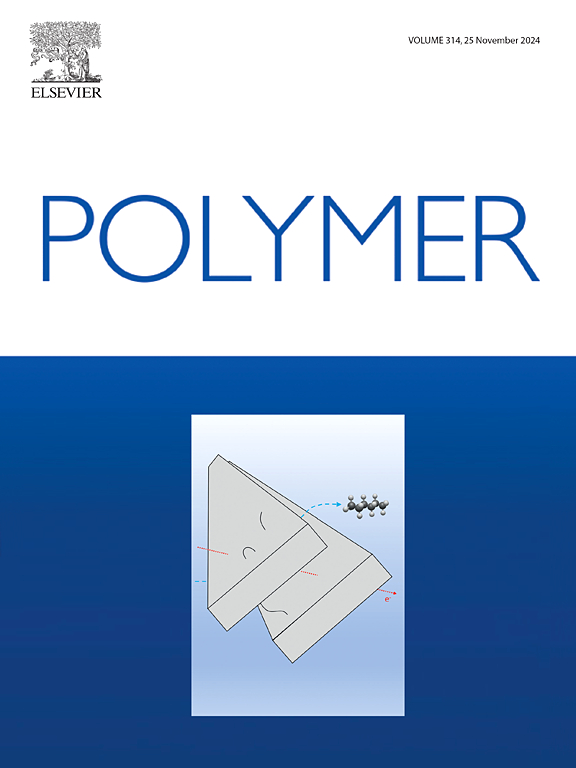Structure and performance evolution of polybutylene succinate foams with lightweight and high-strength wood-like material under solid-state stretching
IF 4.1
2区 化学
Q2 POLYMER SCIENCE
引用次数: 0
Abstract
Wood possesses a unique structure, characterized by "longitudinal tubular cells and aligned fibers" on its radial section, which current polymer processing techniques find challenging to replicate. In this study, polybutylene succinate (PBS) material, foamed with supercritical carbon dioxide (ScCO2) at a foaming ratio of 3.56 times, was subjected to forced solid-state stretching. This stretching was conducted above the glass transition temperature (Tg) and below the melting point (Tm), resulting in a transformation of the spherical cells into a "tubular cell" structure. During this process, the polymer material aligned along the height of the tubular cells, undergoing crystalline reordering and growth. Consequently, the tensile strength of the resulting foam material increased significantly from 7.3 MPa to 30.7 MPa, and the tensile modulus rose from 67.3 MPa to 178.8 MPa. Scanning electron microscopy results confirm that the cell structure of the PBS foam transitions from spherical to a regularly arranged tubular configuration. Furthermore, differential scanning calorimetry and small-angle X-ray scattering tests reveal a substantial enhancement in the crystallinity and orientation of the PBS foam cell walls. Complementary static structural simulations conducted in ANSYS Workbench demonstrate that circular cells can indeed transform into a tubular lattice-like structure, akin to that of wood.


求助全文
约1分钟内获得全文
求助全文
来源期刊

Polymer
化学-高分子科学
CiteScore
7.90
自引率
8.70%
发文量
959
审稿时长
32 days
期刊介绍:
Polymer is an interdisciplinary journal dedicated to publishing innovative and significant advances in Polymer Physics, Chemistry and Technology. We welcome submissions on polymer hybrids, nanocomposites, characterisation and self-assembly. Polymer also publishes work on the technological application of polymers in energy and optoelectronics.
The main scope is covered but not limited to the following core areas:
Polymer Materials
Nanocomposites and hybrid nanomaterials
Polymer blends, films, fibres, networks and porous materials
Physical Characterization
Characterisation, modelling and simulation* of molecular and materials properties in bulk, solution, and thin films
Polymer Engineering
Advanced multiscale processing methods
Polymer Synthesis, Modification and Self-assembly
Including designer polymer architectures, mechanisms and kinetics, and supramolecular polymerization
Technological Applications
Polymers for energy generation and storage
Polymer membranes for separation technology
Polymers for opto- and microelectronics.
 求助内容:
求助内容: 应助结果提醒方式:
应助结果提醒方式:


